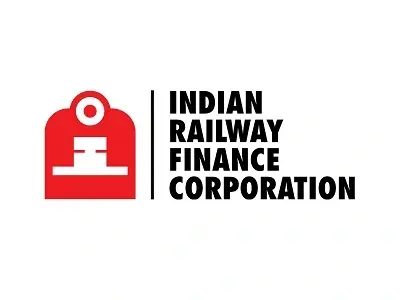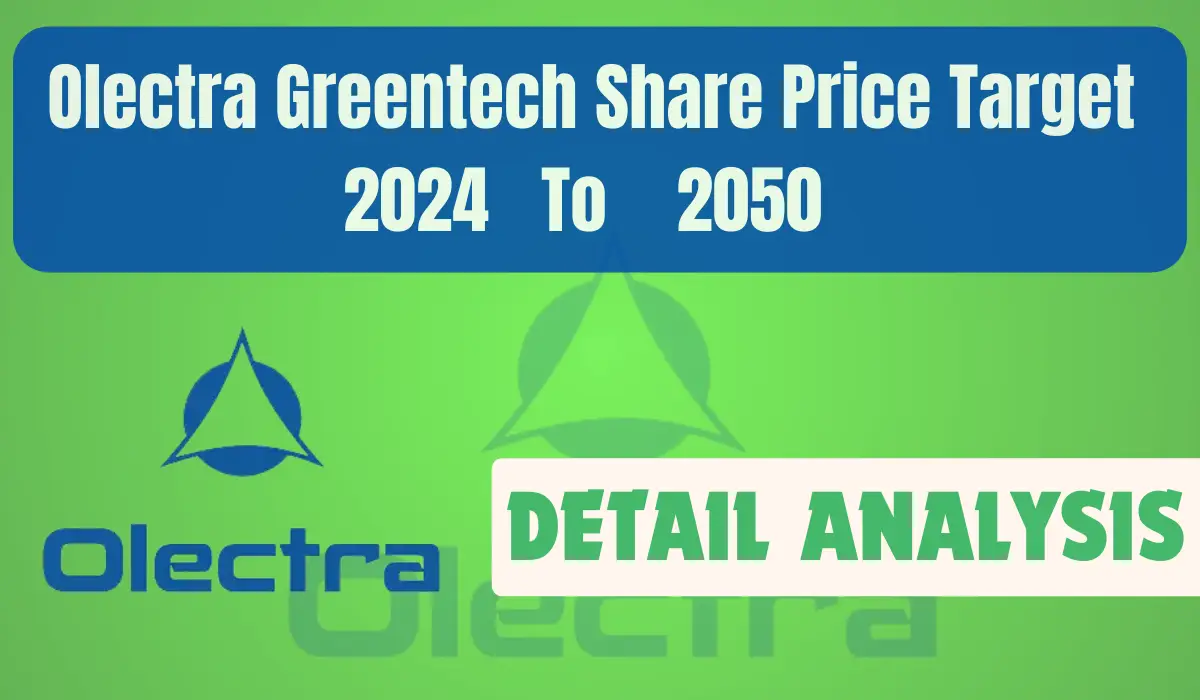Indian Railway Finance Corporation Limited (IRFC) plays a crucial role in financing the operations of India’s national railway system.(Irfc Share Price Target)

It primarily provides funds for acquiring rolling stock, including locomotives, coaches, and other essential equipment.
To meet its funding needs, IRFC utilizes various capital-raising methods. What is Indian Railway?
What Is Indian Railway Finance Corp Ltd (Irfc)?
These include market borrowings, deposits from institutions/public, and external commercial borrowings in rupee/foreign currency.
This article analyzes IRFC’s potential share price outlook across short-, medium-, and long-term horizons.
Peer comparison
| S.No. | Name | CMP Rs. | P/E | Mar Cap Rs.Cr. | Div Yld % | NP Qtr Rs.Cr. | Qtr Profit Var % | Sales Qtr Rs.Cr. | Qtr Sales Var % | ROCE % |
|---|---|---|---|---|---|---|---|---|---|---|
| 1. | I R F C | 146.15 | 29.35 | 190996.25 | 1.02 | 1612.65 | 4.41 | 6899.66 | 2.05 | 5.73 |
| 2. | Power Fin.Corpn. | 476.00 | 7.41 | 157084.82 | 2.85 | 7214.90 | 9.71 | 25721.79 | 14.88 | 9.85 |
| 3. | REC Ltd | 519.10 | 9.23 | 136690.65 | 3.06 | 4037.72 | 6.54 | 13682.43 | 17.06 | 10.05 |
| 4. | Indian Renewable | 192.80 | 35.88 | 51820.08 | 0.00 | 387.75 | 36.18 | 1629.55 | 38.49 | 9.30 |
Share Price Target Tomorrow
| DAY | Minimum Price | Maximum Price |
| Tomorrow | +2.15 | +5.75 |
Irfc Share Price Target 2024
The share price of IRFC has dropped by nearly 55% from its peak in early 2021. This significant decline can be attributed to two main reasons.
Firstly, external economic challenges have played a major role. Secondly, delays in railway spending, largely caused by the prolonged effects of pandemic disruptions, have added to the pressure.
Looking ahead to 2024, some positive factors are expected to drive recovery, including increased demand and growth opportunities.
In 2024, its share price would be between ₹120 to ₹172.
| Year | Minimum Price | Maximum Price |
| 2024 | 120 | 172 |
| Month | Minimum Price (₹) | Maximum Price (₹) |
| October | 120 | 156 |
| November | 135 | 166 |
| December | 140 | 172 |
If financial conditions remain stable and no new public health crises emerge, IRFC stock prices could aim for a recovery in the INR 120-172 range during 2024.
This growth would require maintaining strong credit quality while improving standalone earnings performance.
Irfc Share Price Target 2025
| Year | Minimum Price | Maximum Price |
| 2025 | 140 | 220 |
By 2025, the outlook for IRFC appears promising, as analysts remain optimistic.
This positive sentiment is driven by clear financing needs to support major railway projects.
These projects include expanding freight corridors, upgrading railway stations, and modernizing locomotives and wagons by replacing older models.
Experts predict that IRFC’s share price could range between ₹140 and ₹220 by 2025.
| Month | Minimum Price (₹) | Maximum Price (₹) |
| January | 140 | 176 |
| February | 142 | 179 |
| March | 145 | 182 |
| April | 139 | 189 |
| May | 146 | 194 |
| June | 154 | 195 |
| July | 157 | 197 |
| August | 142 | 203 |
| September | 147 | 207 |
| October | 158 | 212 |
| November | 164 | 217 |
| December | 168 | 220 |
If disciplined policies are maintained, IRFC share prices could potentially surpass the INR 400 target by 2025.
This growth may be driven by strong volume expansion, which could offset challenges from inflation and interest rate cycles.
Additionally, IRFC benefits from a robust balance sheet and the backing of a sovereign parent, offering significant financial stability and protection.
Share Price Target 2026
| Year | Minimum Price | Maximum Price |
| 2030 | 170 | 320 |
By 2025, Its share would be between ₹170 to ₹320
| Month | Minimum Price (₹) | Maximum Price (₹) |
| January | 170 | 276 |
| February | 172 | 279 |
| March | 175 | 282 |
| April | 179 | 289 |
| May | 182 | 294 |
| June | 184 | 295 |
| July | 187 | 297 |
| August | 192 | 303 |
| September | 197 | 307 |
| October | 198 | 312 |
| November | 204 | 317 |
| December | 208 | 320 |
Irfc Share Price Target 2030
| Year | Minimum Price | Maximum Price |
| 2030 | 400 | 570 |
The 2030s timeline enters relatively ambiguous forecasting territory, predicting structural shifts in policies, priorities, and competitive landscape a decade ahead for financiers like IRFC.
Currently, this company is uniquely dedicated to railway lending. Its share price would be between ₹400 to ₹570 in 2030.
The need for financing to replace baseline locomotives and freight/passenger rolling stock remains significant.
This demand is fueled by factors such as improving urban connectivity, enhancing efficiency, and accommodating growing cargo volumes, aligning well with the needs of developing economies.
| Month | Minimum Price (₹) | Maximum Price (₹) |
| January | 400 | 476 |
| February | 442 | 479 |
| March | 445 | 482 |
| April | 449 | 489 |
| May | 456 | 494 |
| June | 464 | 505 |
| July | 487 | 517 |
| August | 492 | 613 |
| September | 507 | 527 |
| October | 508 | 532 |
| November | 514 | 547 |
| December | 518 | 570 |
However, several factors could influence IRFC’s competitive position.
These include the possibility of private financing initiatives, advancements in funding for high-speed rail corridors, and the rise of innovative debt capital solutions in the fintech space.
The future of IRFC stock prices in 2030 may depend on a mix of factors, including policy uncertainties and the growing demand for asset financing.
While these influences could lead to mixed outcomes, the company’s strong market position and focus on structural modernization provide a positive outlook.
Success will largely hinge on how well the company adapts and executes its strategies during ongoing transitions.
Share Price Target 2040
| Year | Minimum Price | Maximum Price |
| 2040 | 1460 | 1750 |
Predicting the 2040s is highly challenging due to the long timeframe involved.
Over the coming decades, changes in industry structures, advancements in debt capital strategies, and shifts in railway policy priorities could make any forecast uncertain and subject to change.
The need for upgrading locomotives, wagons, and station infrastructure will drive financing volumes, with lifecycle replacement economics forming a foundation.
However, the specific requirements will change as technologies and policies continue to evolve leading up to 2040.
The financial outlook for 2040 is difficult to predict due to various uncertainties.
However, in potential scenarios, IRFC is expected to maintain a strong role in supporting the modernization of the Railways.
While specific target prices may vary, estimates for 2040 suggest a range of ₹1460 to ₹1750, with a possibility of a two-fold increase over the next two decades.
| Month | Minimum Price (₹) | Maximum Price (₹) |
| January | 1460 | 1576 |
| February | 1467 | 1579 |
| March | 1470 | 1592 |
| April | 1480 | 1609 |
| May | 1490 | 1614 |
| June | 1500 | 1645 |
| July | 1510 | 1694 |
| August | 1560 | 1703 |
| September | 1550 | 1707 |
| October | 1560 | 1732 |
| November | 1590 | 1737 |
| December | 1600 | 1750 |
Share Price Target 2050
| Year | Minimum Price | Maximum Price |
| 2050 | 2550 | 2750 |
The 2050 timeline brings us into a speculative realm, where significant changes in mobility concepts, transportation energy standards, financial models, and key economic, demographic, and policy factors will shape how rolling stock financing evolves.
These elements will play a vital role in determining the future of transportation.
| Month | Minimum Price (₹) | Maximum Price (₹) |
| January | 2550 | 2750 |
| February | 2570 | 2750 |
| March | 2580 | 2750 |
| April | 2598 | 2750 |
| May | 2610 | 2750 |
| June | 2650 | 2750 |
| July | 2670 | 2750 |
| August | 2680 | 2750 |
| September | 2690 | 2750 |
| October | 2699 | 2750 |
| November | 2707 | 2750 |
| December | 2713 | 2750 |
Selective value accumulation strategies during volatile market cycles offer a potentially strong opportunity for long-term investment in Indian Railway finance, making it an appealing option for multi-decade investment horizons.
Irfc Share Price Forecast
| Year | Minimum Price | Maximum Price |
| 2024 | 120 | 172 |
| 2025 | 140 | 220 |
| 2030 | 400 | 570 |
| 2040 | 1460 | 1750 |
| 2050 | 2550 | 2750 |
In summary, the short-term growth potential of IRFC stock is influenced by India’s economic cycles.
However, the long-term prospects are supported by steady demand for financing essential mobility infrastructure over the years.
This makes it an attractive option for investors using a disciplined accumulation strategy, capitalizing on short-term market fluctuations.
Investors who seek comfort in the stability of financial fundamentals can benefit from carefully timed investments.
By distinguishing between hype and real value, and accepting some market fluctuations as part of the process, they position themselves for long-term rewards driven by clearer future policies.
IRFC Financial Balance Sheet
Mar 2023 | mar 2024 | Sep 2024 | |
|---|---|---|---|
| Equity Capital | 13,069 | 13,069 | 13,069 |
| Reserves | 31,612 | 36,110 | 38,396 |
| Borrowings + | 418,935 | 412,039 | 403,111 |
| Other Liabilities + | 26,744 | 23,865 | 39,773 |
| Total Liabilities | 490,359 | 485,082 | 494,348 |
| Fixed Assets + | 19 | 22 | 23 |
| CWIP | 0 | 4 | 0 |
| Investments | 14 | 54 | 56 |
| Other Assets + | 490,326 | 485,003 | 494,269 |
| Total Assets | 490,359 | 485,082 | 494,348 |
Should I Buy Irfc Share?
IRFC provides a balanced exposure, offering a mix of stability in financing assets while adapting to evolving market needs, thereby safeguarding its competitive position. The investment advantages include:
Relying too heavily on vulnerabilities outside the Railway sector can reduce flexibility, which is an important factor to consider.
Adopting a multifaceted approach allows for more rational and thoughtful investment decisions.
Indian Railway Finance Corp Ltd (Irfc) Earning Results
IRFC has consistently delivered stable historical performance, largely driven by its strong asset quality, supported by its sovereign ownership.
This status helps maintain solid credit health throughout various business cycles. Additionally, its diverse funding sources contribute to sustained profitability.
While there is inherent variability in tracking economic fluctuations, having stable revenue streams helps manage these changes.
However, regulatory uncertainties continue to be a significant factor that affects strategic decisions.
Is Irfc Stock Good To Buy? (Bull Case & Bear Case)
The arguments below present an investment case balancing positives and negatives:

Bull Case
- Asset financing pipeline offers cashflow visibility, protecting downside risk
- Fintech innovations diversifying capabilities over the decade
Bear Case
- Eventual private participation may compress margins in segments
- Policy reliance risks beyond Railways dampen flexibility
IRFC presents a balanced mix of financial stability and specialized expertise, which helps it manage long-term budget uncertainties that may impact the competitive landscape in certain areas.
However, it must effectively handle temporary fluctuations to maintain its position.
Conclusion
IRFC offers a solid opportunity in the essential transportation asset financing sector, benefiting from its strong connections with the government. This provides stability through various business cycles.
Although there are risks related to policy changes, the long-term potential of efficiency-driven modernization is appealing, provided execution stays on track. Investors who understand the company’s strengths and align their investments with the right timing could see positive outcomes.
However, it’s important to consider assumptions related to long-term changes when planning future investments.
FAQs
What is the predicted share price target for IRFC in 2025?
This FAQ can address the estimated price range for IRFC shares based on current market trends, financial performance, and future growth potential.
What factors will influence the IRFC share price between 2025 and 2050?
You can discuss key factors such as government policies, railway sector growth, interest rates, and the overall economic environment that will impact the IRFC share price.
Is IRFC a good long-term investment for 2025 to 2050?
Here, you can analyze the company’s fundamentals, growth prospects, and risks to help readers decide whether IRFC shares are worth investing in for the long term.



